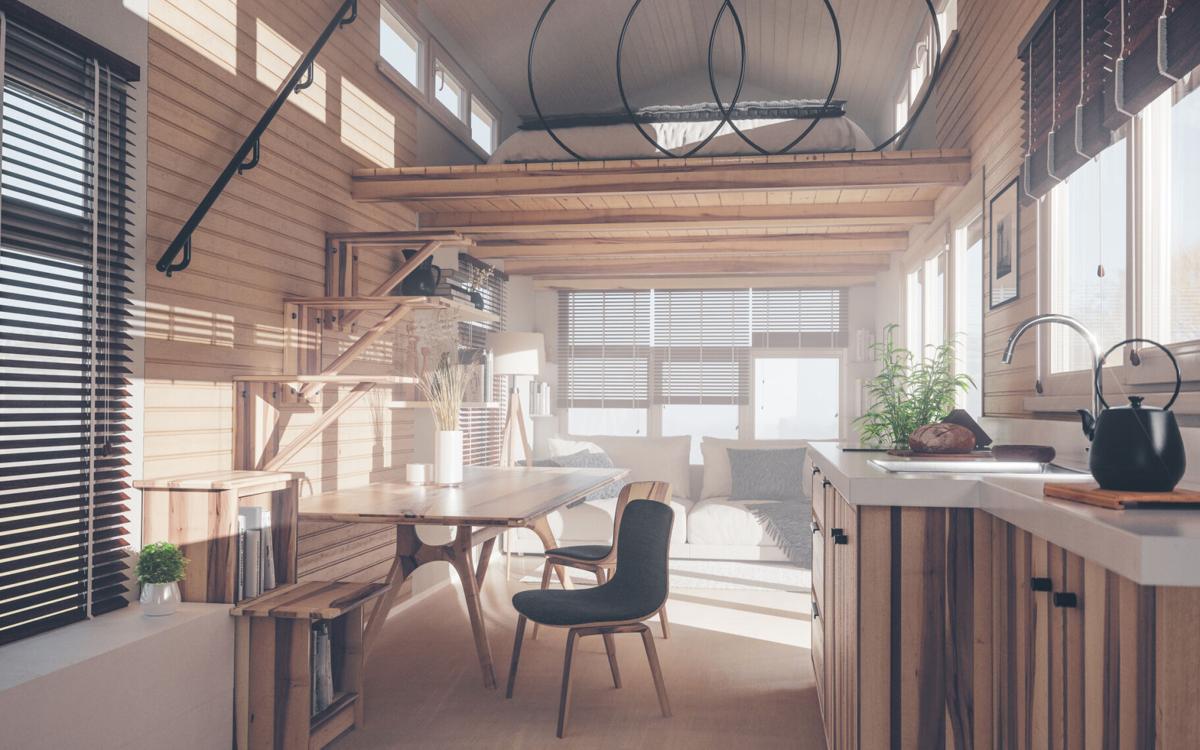With housing costs going crazy everywhere, folks are taking a hard look at alternatives to a conventional home. Let’s look at how tiny homes can become your house, home, castle or cabin.
Question: What is considered a tiny home?
Answer: Building codes in Arizona establish guidelines and rules regarding tiny homes. Any home under 400 square feet is considered a tiny home and is subject to some rules. Arizona doesn’t allow a space to be occupied as a residence under 200 square feet.
There are two types of tiny homes that are under codes. One is permanently attached to a foundation, and the other is constructed on a trailer for mobility. The rules for each are a little different in the various jurisdictions across our state, so, check with your local building department before you build. You are going to need a permit.
Q: Are tiny homes a new trend?
A: Whenever something out of the ordinary captures the attention of mainstream media, it gains the label of a “new trend.”
Tiny homes have fit that label for a few years, though the reality is they have been around for centuries. In all fairness to the trend, the tiny home has added some real razzle-dazzle to the home design industry. Quite stylish for some time, the glamour factor is the new trend — living large in a little space.
Q: What kind of options do I have for a tiny house?
A: There are two types of tiny homes. One is attached to a permanent foundation, and the other is on a trailer.
The home can be stick-built on the foundation or prefabricated and attached. Both can work well. The custom-built (stick-built) will give you more say in how the design comes about. Many folks have used old storage containers as the basic structure for their tiny home.
In Arizona, a tiny home built on a trailer is typically looked at in the same light as an RV. The mobility of this option often means you won’t have to buy land, but like an RV, you can rent a space or a piece of ground for as long as you want to be at that location.
The fundamental design components are pretty much the same for either option.
Q: What do I need to consider when designing my tiny house?
A: Designing for your “stuff” is very important.
If you are contemplating moving from a 900-square-foot apartment or a 2,000-square-foot home, the word “purge” will play a large part in your transition. Most tiny home dwellers have little attachment to things.
Before you even start designing your tiny home, you must take inventory of your stuff. Most of it will not make the move. Go through everything — clothes, papers, toiletries, kitchen supplies — everything. Place each item in one of these four categories: trash, recycle, donate and keep. After you have rid yourself of the trash, recycle and donate, go through the process again with the “keep” items. You may need to do this multiple times until you reach the number of items that can comfortably fit into your tiny home.
Pro Tip: Once in your tiny home, practice the “one thing in, one thing out” rule. That means every time you bring something new into your home, one thing must leave.
If it’s your first go at a tiny home, do your homework or hire a professional. There are several tiny home designers and contractors across the state. The limited space requires a great deal of planning because every inch counts. Be sure you hire a contractor licensed by the Arizona Registrar of Contractors.
Most components serve multiple functions. Kitchen counters can serve as a table with pull-outs and couches transformed into beds, for example.
Because the space is small, adding large window areas, large sliding glass doors, or skylights can open it up. Connecting with nature with outdoor living spaces increases the “living large” concept.
Also, think vertically. A taller space opens up the possibility of a sleeping loft. Going vertical also requires stairs, and they open up other nifty design opportunities. Use the area under the stairs for storage or a small bathroom. Don’t think about a separate shower. The whole bathroom space is the shower space.
Q: How much will I need to adjust my lifestyle to live in a tiny home?
A: You will need to change a few things, for sure.
When living in a tiny home, clutter is counter to efficient use of space, and it detracts from the feeling of having some elbow room. So, if you are a “pile it” kind-of person, this lifestyle may be challenging, as noted in the first step of the tiny home design process.
Storage space is a coveted luxury. There are very few closets, if any. If there are, the clothes hang parallel to the opening, not perpendicular as in a standard closet, and are only six inches deep.
The Museum of the City of New York had a micro apartment display a few years ago showing innovative ideas for small-space living. Space is certainly at a premium in the Big Apple. The concepts demonstrated can be incorporated into a tiny home in the Grand Canyon State. Watch the demo on YouTube at tinyurl.com/microliving. Also, search online for clever “unfolding apartment” ideas that work in a tiny home.
Living in a tiny home requires a mindset many of us don’t have. We love our things. Whether you are a 20-something just getting started, single, partnered up, or empty nesters significantly downsizing, a tiny home might be the way to go. But you really need to want it.





